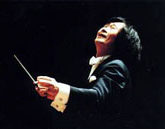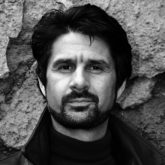The plan for a requiem mass began to occupy Verdi following the death of his fellow Italian composer, Rossini in 1868. Initially, he felt a large scale work should be composed with each individual movement being written by a different Italian composer. It was to have been performed on the first anniversary of Rossini’s death, and then later on at major anniversaries, but never at mundane concerts. After much dragging of heels all round, the plan finally failed. Verdi himself did compose his own allotted movement, the Libera me. When it transpired that no one would undertake to write the Dies Irae, Verdi sat down to sketch one. Two years later, a music critic friend (in the days when music critics were actually occasionally useful!) persuaded Verdi to work out the other movements. The process was accelerated by the death in 1873 of Verdi’s good friend, Alessandro Manzoni, who was one of the leading figures of literature and the Italian Risorgimento. The composer decided to complete the work in Manzoni’s memory and it was premiered on May 22nd 1874 at the San Marco cathedral. The performance was an immense success – and the Requiem has maintained its popularity ever since.
As Hans von Bülow rather maliciously noted that the Requiem “is Verdi’s latest opera, this time in ecclesiastical robes.” There is no disputing the work’s theatricality. The ageing master, who after completing Aida had decided to abandon the opera genre for a while, could not hide his true colours when setting the sacred text. The end result is extraordinarily powerful and dramatic.
In the first larger unit, the Introitus that begins with the words “Requiem aeternam”, and also in the Kyrie, it is dark textures that prevail. The composition commences with the whispering chorus and deep strings. Although the music climaxes, at the end of the Kyrie it again dies away into a hushed piano dynamic.
The beginning of the Dies irae makes for an unbelievably powerful contrast. Verdi pulls out all the stops to create a musical evocation of the final judgement, with the opening chords sounding like nails being driven into coffins, followed by the tense chromatic melody and the powerful use of the brass instruments. As with most composers of Requiem masses, Verdi unfolds the long sequence of the 13th century verses into individual self-contained movements. The Tuba mirum is introduced by trumpets in the orchestra and by others placed some distance away. The words of the chorus who enter shortly, seem to get lost in the huge panic of the brass instruments. After the evocation of the final judgement, the movement dies away to pianissimo, and the bass soloist sings in an ever more faltering voice that on this day, Death itself was also astonished. The next movement, the Liber scriptus is a mezzo-soprano aria, which Verdi connects to a brief quotation from motifs found in the Dies irae. A trio follows, with a mood of supplication (Quid sum miser) before the entire ensemble is employed (in another dramatic contrast) with Rex tremendae. The Recordare is a duet between soprano and mezzo-soprano, Ingemisco is a tenor aria, while Confutatis is an aria for bass. At the end of this latter, Verdi again evokes the beginning of the Dies irae. This leads to the final unit of the sequentia-text, with the broad lamenting melody of the Lacrymosa.
The Offertorium is a symmetrical structure in five parts (A-B-C-B-A), with a particularly lengthy central section, the melody of which (sung by the tenor) is slightly reminiscent of the Gregorian world.
At the beginning of the Sanctus, the brass instruments dominate. After the trombone fanfare, the chorus launches into a double fugue. The Agnus Dei is a kind of variation movement, again with a Gregorian like basic theme, heard in major and minor variants. The mezzo, tenor and bass sing the Lux aeterna as a trio – the fourth soloist, the soprano receives the lead role of the Libera me. Although – as we have already mentioned – this was the first movement to be completed, important musical material from the Dies irae and Introitus can be found in it. There is a continuing dispute among musicologists whether Verdi added these details subsequently, or that they were originally present and gave birth and inspiration to the movements that followed.






